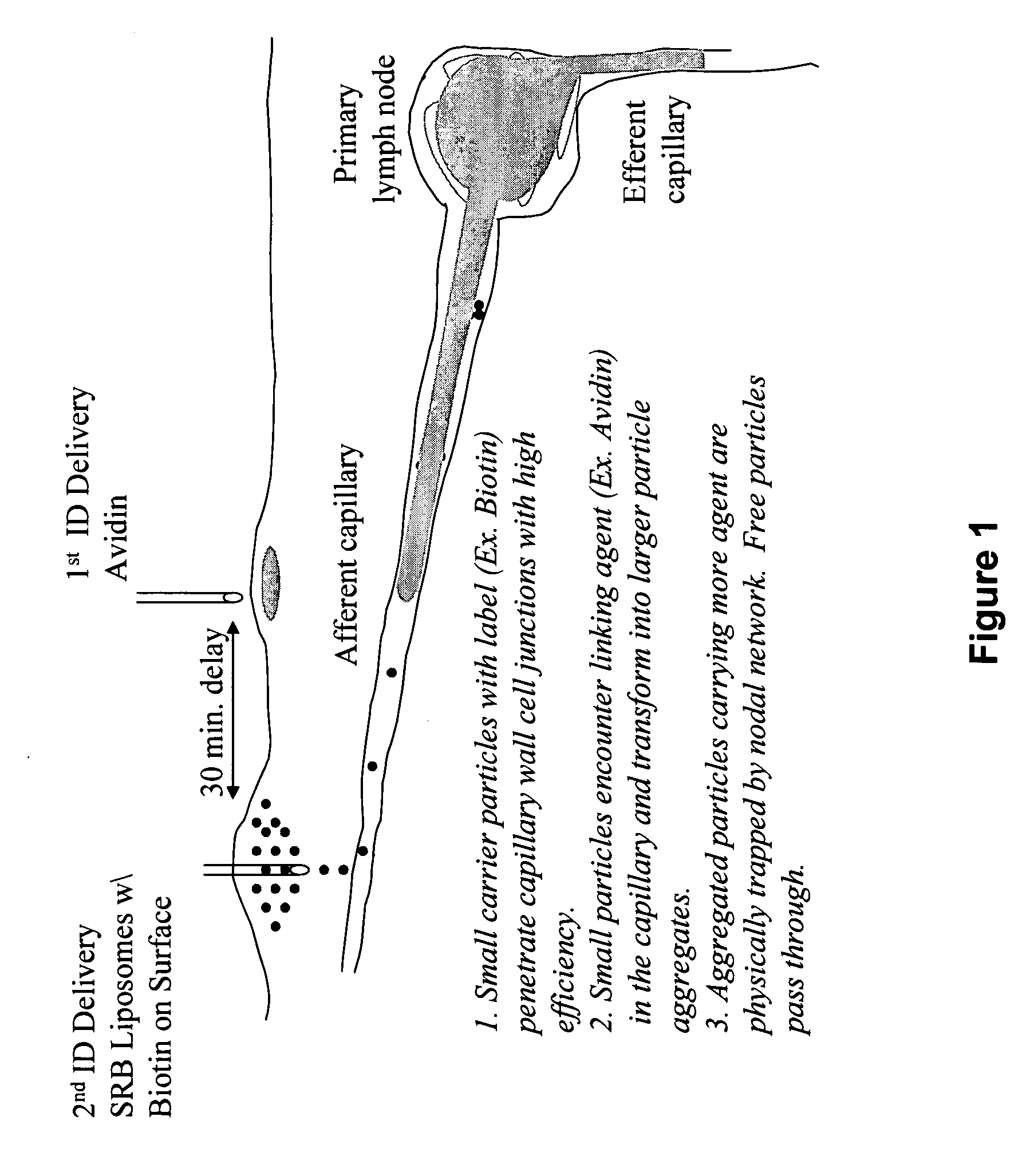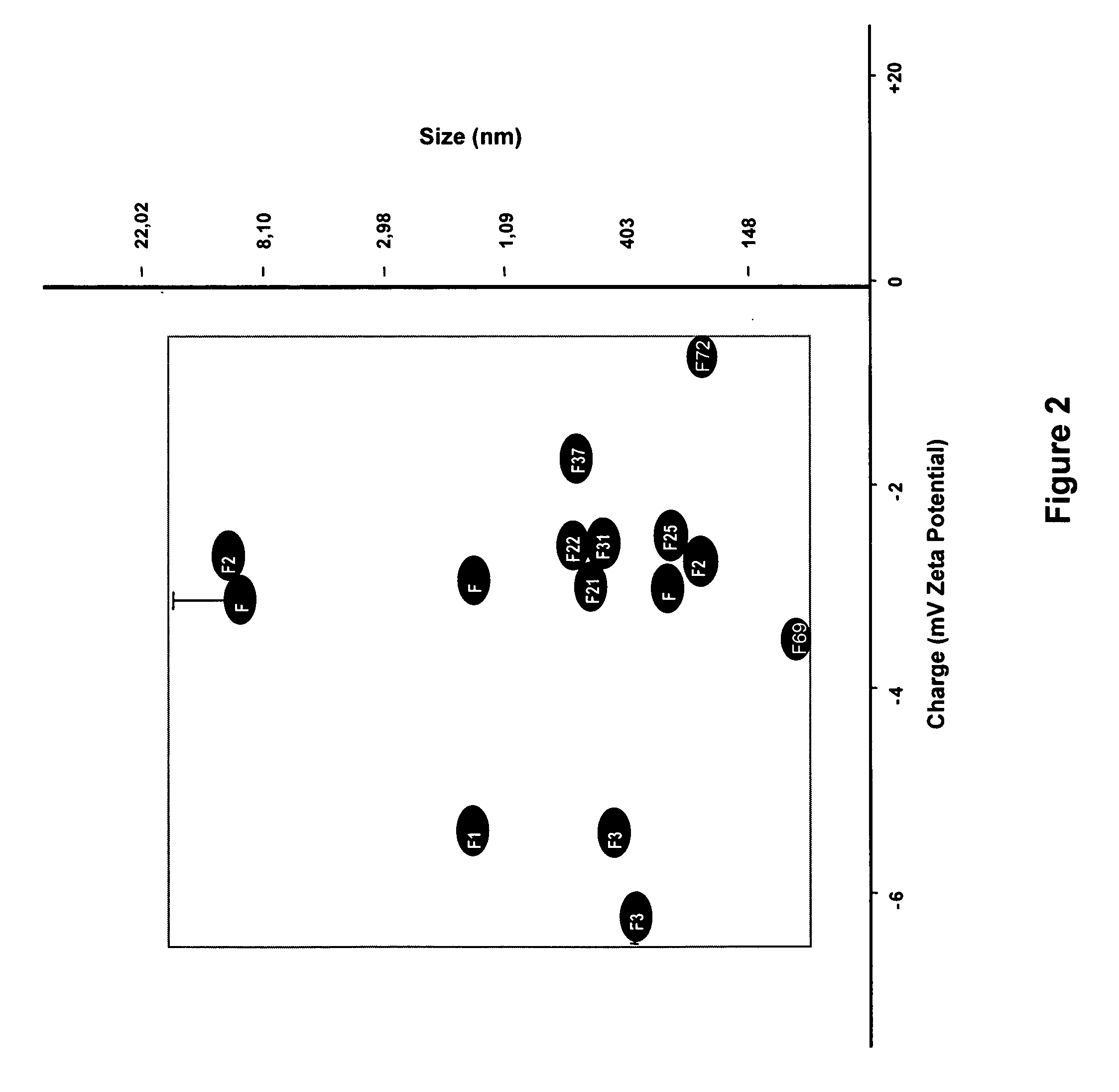Particulate formulations for intradermal delivery of biologically active agents
a technology of biologically active agents and formulations, which is applied in the direction of pharmaceutical delivery mechanisms, nanoinformatics, prosthesis, etc., can solve the problems of rarely being targeted, rarely being targeted, and rarely being delivered to a given depth below the surface of the skin, so as to achieve rapid and efficient transport to the local lymphatic system, reduce accumulation, and be small enough
- Summary
- Abstract
- Description
- Claims
- Application Information
AI Technical Summary
Benefits of technology
Problems solved by technology
Method used
Image
Examples
Embodiment Construction
[0068] In one embodiment, the present invention encompasses a method for administering one or more biologically active agents to a subject's skin, in which the biologically active agent in particulate form (e.g., encapsulated within particles) is delivered to the intradermal (ID) compartment of the subject's skin in a condition that causes the agents to form an aggregate. Subsequent to the delivery, during their movement to the lymph node, the agents form an aggregate sufficiently large to be retained in the node. In another embodiment, this invention also encompasses a method for administering one or more biologically active agents to a subject's skin, in which the biologically active agent in particulate form (e.g., encapsulated within particles, preferably liposomes) is delivered to the intradermal (ID) compartment of the subject's skin. It was discovered that combining the ID delivery with specific size, charge, and / or loading capacity of liposomes can result in the retainment o...
PUM
| Property | Measurement | Unit |
|---|---|---|
| diameter | aaaaa | aaaaa |
| length | aaaaa | aaaaa |
| total thickness | aaaaa | aaaaa |
Abstract
Description
Claims
Application Information
 Login to View More
Login to View More - R&D
- Intellectual Property
- Life Sciences
- Materials
- Tech Scout
- Unparalleled Data Quality
- Higher Quality Content
- 60% Fewer Hallucinations
Browse by: Latest US Patents, China's latest patents, Technical Efficacy Thesaurus, Application Domain, Technology Topic, Popular Technical Reports.
© 2025 PatSnap. All rights reserved.Legal|Privacy policy|Modern Slavery Act Transparency Statement|Sitemap|About US| Contact US: help@patsnap.com



